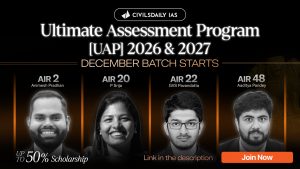Joint Military Exercise ‘Ekuverin’
Why in the News? The 13th edition of Exercise Ekuverin, the bilateral joint military exercise between India and the Maldives, commenced in the Maldives on February 4, 2025. About Exercise Ekuverin The word “Ekuverin” means ‘Friends’ in the Dhivehi language, signifying the close ties between India and the Maldives. The exercise was first conducted in… Continue reading Joint Military Exercise ‘Ekuverin’

